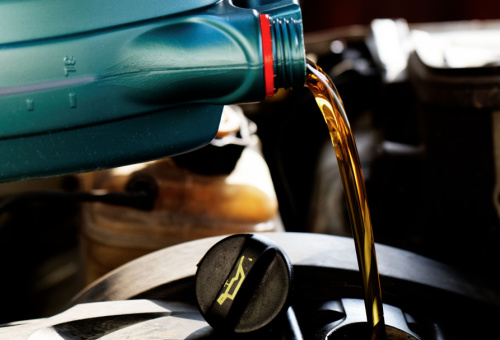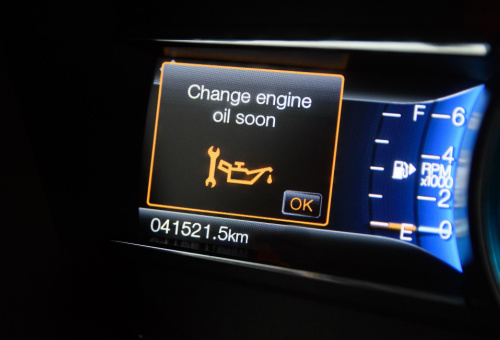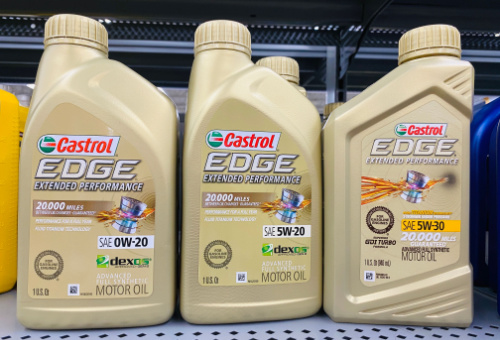
Have you ever wondered why car manufacturers specify or recommend that particular a brand of engine oil must be used in their products? Wouldn’t oil that meets or exceeds the OEM specifications work just as well? More to the point, though, how do you respond to a customer who tells you that they have never used the expensive “fancy oil” the factory recommends in their vehicles, and they have never had an engine failure in 45 years of owning cars?
To some customers, this constitutes proof that all engine oils are the same, except for the colours of the containers engine oils come in but responding to the above hypothetical customer by asking if they had owned and serviced all of their cars for 45 years, might not be a good idea. Instead, we suggest that the wiser option would be to take a fact-based approach in educating your customer on why engine oils are not the same and why the differences matter. Thus, in this article, which is the first in two-part series, we will clear up some of the misconceptions about modern engine oil, starting with the question of-

There was a time when the brand of engine oil one put in a car's engine, gearbox, or differential or what brand or type of grease one used in a light vehicle's wheel bearings did not matter much. In fact, up until the introduction of the OBD II standard and legally enforceable emissions regulations, effective automotive lubrication was largely a hit-or-miss affair.
However, in fairness to the automotive lubrication industry, it must be stated that engine failures caused by bad oil were not nearly as common 20 years ago as they were 40 years ago, which was when this writer began his career in the car repair industry. Similarly, in terms of their composition and performance levels, the automotive lubricants of 20 years ago bear no resemblance to modern lubricants, which are today purpose-designed by teams of chemical and mechanical engineers to suit a particular application.
Limited space precludes a comprehensive discussion of all, or even most of the technological and metallurgical advances that have made the development of modern engines possible. Suffice to say, however, that the metal alloys, high-tech coatings, and very small dynamic clearances in all modern engines require lubricants that are highly resistant to extreme shear forces, and the effects of both oxidation and high temperatures while providing consistently superior levels of lubrication throughout the engine, at the same time.
To do all of the above reliably, modern engine oil and other classes of lubricants are highly engineered products that are based on “recipes” developed by car manufacturers during the development phase of new engines. In practice, each oil “recipe” consists of several dozen requirements, each of which is designed to address a particular need. For instance, the extreme pressures between some moving parts of fuel injection equipment that are built into some engines often cause some of these parts to fail if the oil in the engine is not specifically designed to cope with extreme pressures.
One other example involves the myriad issues and failures that plague some Ford Ranger models when engine oil that does not conform to Ford’s stringent standards* is used in these models. Typical issues include EGR cooler failures, oil pump damage/failures, injector failures, and repeated or recurring DPF failures. All these issues have been linked definitively to engine oil that does not a) contain the additives Ford specifies or b) oil that does not contain the prescribed additives in the specified concentrations.
* Recommended/specified oil formulations for 2015/6 3.2L Turbo Diesel Ford Ranger trucks with STOP-START technology: ACEA A5/B5, API SN/CF, ILSAC GF-4 or earlier specification 5W-30 lubricant. (Source: Castrol Australia)
We could list some other examples, such as excessive oil consumption on many Audi, BMW, Honda, Toyota, Mercedes, and other vehicles. Although these vehicles are natural oil guzzlers, their oil consumption rates increase dramatically when non-specified oil is used, but we are sure you get the point. Oil formulations and manufacturer’s standards matter because oil formulations are often application-specific not only in terms of the source and quality of additives in the oil but also in terms of how much of each additive is present in the oil formulation.
Therefore, given the above, the question becomes one of whether (or not) all engine oil brands conform to the specific standards any given car manufacturer had developed for a particular application. The short answer is that some oil brands and formulations do, and some do not, for a variety of reasons.
The long answer is a bit more complicated because some oil formulators combine clever marketing strategies based on the inspired usage of oil industry terminology to create the impression that a particular oil formulation is safe to use in one or more applications.
Note that the above is not the same as saying that all oil formulators are set on duping unsuspecting car owners. Far from it because the fact is that all reputable oil formulators spend enormous amounts of time and money on ensuring that their products conform to car manufacturers’ requirements in all respects. However, it is also true that the global automotive lubrication market is flooded with engine oil of dubious quality at best, and oil that is little more than used oil that had been somewhat cleaned up at worst, which brings us to the two most important terms in automotive lubrication, these terms being-
It is important to note that the above terms can be present on the packaging of any automotive lubricant- not just engine oil, but let us look at the true meanings of these terms in some detail, starting with-
“OEM Approved”
In the context of automotive lubricants, the term "OEM approved" means that a car manufacturer has officially approved a particular lubricant or oil formulation for use in its products. Here is the short version of how this process works-
Since car manufacturers do not develop oil formulations as their core business, all car manufacturers work in partnership with established and reputable oil companies, such as Castrol, to develop oil formulations to suit particular needs and requirements. At a minimum, the car manufacturer would specify that a new formulation must-
More specifically, though, a car manufacturer would specify that, amongst many other properties, the oil must-
Typically, the required specifications would cover dozens of chemical properties the final product must have, all of which can be achieved by adding a "package" of additives that can account for up to 30 per cent of the oil formulation's total volume. We need not delve into the complex relationships between oil additives here, beyond saying that any physical or chemical property of an oil formulation can be changed, modified, or adapted to suit the different lubrication requirements and needs of different engines and varying operating conditions by adapting the cocktail of additives.
However, the proverbial devil lives in the details, and much of the detail involves the origin and/or chemical composition of the base oil that forms the chemical foundation upon which the actual oil formulation is “built”. This is a hugely complex series of procedures that can each take several hundred hours to test and assess under both real-world and laboratory conditions, but suffice to say that the cost of developing a new oil formation can run into tens of millions of dollars.
So, assuming that a car manufacturer accepts the final product, it will officially approve the formulation for use in its products. This approval then allows the oil formulator to state that its product is “OEM Approved” in terms of meeting all of the required specifications that apply to a particular application, which is vastly different from a situation in which an oil formulation claims to-
“Meet or Exceed” an OEM specification
The term “meets or exceeds” is intended to convey the impression that a particular oil formulation “meets or exceeds” the minimum oil standards and/or specifications a car manufacturer had developed for a particular oil formulation. Here is how this works-
Since car manufacturers are for the most part, obliged not to follow restrictive business practices, all car manufacturers make their requirements known to the broader lubrication industry when they and their lubrication partner(s) start to develop a new oil formulation. However, car manufacturers typically do not supply all the information required to develop a product that would be identical to the one its lubrication partner is working on.
For instance, the specifications supplied to the broader lubrication industry may not specify the source or minimum required quality of say, detergents, friction modifiers, or anti-foaming agents. So in practice, such omissions could make it very difficult, if not impossible to create an oil formulation that meets all of the OEM's stated specifications, meaning that many oil formulators and blenders produce oil formulations whose principal chemical properties may fall within a few percentage points of at least some of the required specifications. So, while these products are in no way “OEM Approved”, many of them could be close enough to some OEM specifications to be of use in the budget-focused aftermarket, where the price of oil is sometimes more important than its performance.
However, several reputable oil formulators do actually go to the trouble and expense of submitting their products to car manufacturers for evaluation and testing. In some cases, one or more car manufacturers may officially approve a submitted oil formulation, but it is important to note that there is no such thing as a blanket approval. Car manufacturers typically only approve an aftermarket oil formulation for one specific application, meaning that no oil formulator can ever claim that carmaker “X” has approved a particular oil formulation for use in all of its products.
It is also important to note that as in many automotive markets, aftermarket oil blenders and importers in Australia are not required to obtain a specific approval or acknowledgment from car manufacturers to claim that their products do, in fact, “meet or exceed” OEM specifications. The upshot of this is that many oil brands/formulations imported from the Far East and elsewhere claim that they “Meet or Exceed” OEM specifications, when in reality, these “oil formulations” are often nothing more than degraded but (sometimes, badly) filtered used oil. In fact, some imported budget-line oil formulations sometimes contain substances like discarded brake fluid, high concentrations of sulphuric acid, high levels of dissolved water, various types of transmission fluids, and quite possibly, a fair amount of leftover breakfast tea, as well.
The above explanation of what “Meets or Exceeds” really means for the public should provide plenty of food for thought when customers ask us to fill their engines with budget-line oils they supply themselves, but the “OEM Approved” vs. “Meets or Exceeds” equation is further complicated by the variations within-

As we know, there are mineral oils and synthetic oils, but nothing about modern vehicles is ever that simple, so let us start with discussing-
Mineral oil
The mineral oil we pour into engines is a highly refined form of crude oil, but if all forms of crude oil were the same in terms of their chemical composition in general, and their sulphur content in particular, we would likely not have had the stringent emissions regulations we do have today.
Emissions regulations aside though; the problem with mineral-based engine oil is that it is refined from a blend of different batches of crude oil that are extracted from different geographic regions to dilute the differences in the chemical compositions of the various batches of crude oil being refined at any given time. If we add to this the facts that-
- then we can begin to understand how difficult it is for reputable oil formulators to ensure consistency in the branded oil formulations they supply to both car manufacturers and the automotive repair/service industry.
For example, the viscosity of refined base oil is as much a function of the refining process as it is of the composition of the crude oil base stock. Thus, since the viscosity of an OEM-approved oil formulation is among the most important defining characteristic of any OEM-approved oil formulation, oil formulators must blend large quantities of refined base oil from different sources to even out viscosity variations between production batches.
Then there is the problem of the sulphur content* of blended mineral base oils because even though sulphur is an excellent lubricant, it is also a major pollutant and contaminant that contributes greatly to the degradation of both engine oil and several emission control components. However, since completely removing sulphur from base oil is hugely expensive, oil formulators use proprietary additive packages to reduce the effects of the sulphur they cannot remove from base oils due to the high costs involved.
*We will say more about the sulphur content of modern oils in Part 2 of this article.
The practical effect of this is that although producers of branded oil formulations generally produce high-quality, fit-for-purpose oil formulations, batches of branded mineral engine oil formulations are seldom the same in terms of their final chemical composition, or the relative concentrations of additives they contain. However, it is important to note that the overall quality of mineral oil formulations produced by companies like Castrol is so consistently high that minor differences between batches of oil typically have no meaningful effects on fuel economy, exhaust emissions, and engine longevity.
Synthetic oil
The only aspect of synthetic oil that is synthetic is the fact that synthetic base oils are distilled from several hydrocarbon-rich gases in hugely complicated processes, as opposed to being refined from crude oil. There are several distinct advantages to this process, including the facts that synthetic base oil does not contain sulphur, and that most of the chemical properties of synthetic oil, such as its viscosity, are determined by the combination and relative concentrations of gases that are distilled.
However, like base oils that are produced from crude oil, synthetic base oils have little lubricity. Therefore, all synthetic base oils are fortified with many of the same additives that are used in mineral base oils, but in somewhat different concentrations since the evenly sized molecules of synthetic base oils are more effective at dispersing additives throughout the oil in the engine than the unevenly sized molecules in mineral base oils.
In practice, the even dispersion of critical additives means that synthetic oil forms extremely stable hydrostatic lubricating films that are highly resistant to degradation by the high shear forces that result from the oil being forced through very small clearances.
As a result, synthetic oil provides significantly higher levels of lubrication than even the most advanced mineral oil formulations because lubricating films are distributed evenly throughout the contact areas between sliding surfaces, which brings us to-
Mineral /synthetic oil blends
Mineral/synthetic oil blends should perhaps more properly be called a category of oil, as opposed to a type of oil. Whatever we call these blends, though, the problem is that there are no standards in force anywhere in the world that define the word "blend" in this context.
For instance, some blends contain less than 2 per cent of synthetic oil by volume [of the blend], which, if anything, does very little to enhance the lubrication properties of the mineral oil component of the mixture. Thus, while the theory of mixing mineral oil with a small amount of synthetic oil to enhance the performance of mineral oil sounds like a good idea, the practical execution of the idea leaves much, if not everything to be desired.
Note, though, that we are not suggesting that all oil formulators and blenders are intentionally fleecing unsuspecting car owners and workshops by selling expansive oil blends with uncertain or unknown relative compositions. However, based on the general absence of information about the composition of mineral/synthetic oil blends, it would not be unreasonable to say that few, if any mineral/synthetic oil blends offer car owners any tangible or apparent advantages and/or benefits over either pure mineral or synthetic oil formulations.
In the interest of fairness, though, it must be stated that mineral/synthetic oil blends supplied by the world’s leading oil formulators/blenders would almost certainly contain more than what amounts to trace amounts of synthetic oil. But then again, the actual amounts of synthetic oil in blends marketed by even the leading brands is never published or stated on the packaging, so one can never be sure what one is getting for one’s money.
However, even if a high-priced, branded mineral/synthetic oil blend contains more than trace amounts of synthetic oil, it is worth remembering that adding small amounts of synthetic oil to mineral oil may or may not enhance the overall lubricity of an oil blend somewhat. However, it is also worth remembering that the lubricity of synthetic oil is always diminished when it is blended with even small amounts of mineral oil, which somewhat ironically, defeats the purpose of adding meaningful amounts of synthetic oil to mineral oil formulations, in the first place.
Note that the above is not the same as saying that mineral/synthetic oil blends are inherently bad, but the lubrication demands of modern high-performance engines are such that these types of blends are typically not recommended for use in new vehicles by car manufacturers, which begs the question of-

This is not an easy question to answer because the viscosity and thermal stability of oil formulations are no longer the most important criteria or specifications car manufacturers consider when they specify a particular oil formulation for use in their products. Moreover, all leading oil formulators/blenders produce OEM-approved mineral and synthetic oil formulations for very specific applications, and provided that each formulation is used only as recommended by car manufacturers, both types of oil formulations provide the required levels of lubrication in their intended applications.
Let us look at the above from the perspective of car manufacturers who are legally obliged to design and produce engines that produce emissions that meet increasingly stringent exhaust emissions. The only way to satisfy not only current exhaust emission regulations but also the next iteration of regulations that are due in about two years from now is to build engines around increasingly complex mechanical and electronic control systems.
While electronic systems per se don't require lubrication, complex mechanical components such as variable valve timing actuators do, but the problem is that modern mechanical systems are so finely engineered that the viscosity and thermal stability of modern engine oil formulations are no longer sufficient to guarantee the correct operation of these (and other) systems over extended periods.
In fact, much of how well (or otherwise) any given mechanical system works in any given modern engine rests on the interactions between the additives in the oil formulation the engine’s manufacturer had specified for use in that engine. As a point of interest, it is perhaps worth mentioning that the additive packages in modern oils now account for up to 30 per cent (or sometimes more) of the volume of a unit of oil, which is about double the volume of additives in many oil formulations that were produced just ten years ago.
However, there is a downside to complex additive packages that are engineered to meet specific lubrication needs and requirements. For example, two oil formulations of the same brand and viscosity, and carrying similar approvals from the same car manufacturer are often sufficiently different in terms of their additive packages to prevent them from being used interchangeably in different engines made by the manufacturer that approved both formulations.
Thus, as a practical matter, using two similar but subtly different oil formations interchangeably across multiple applications could, and often does, result in increased emissions, reduced fuel economy, increased rates of mechanical wear, and most importantly, reduced engine longevity in applications that require application-specific oil formulations.
From reliability and emissions perspectives, the “best” oil is always the oil formulation a car manufacturer specifies for use in its product(s)- regardless of whether that oil formulation is of mineral or synthetic origin. After all, car manufacturers and (some) aftermarket oil formulators/blenders spend vast amounts of money and time on developing oil formulations that meet modern engines' lubrication requirements, so using non-OEM-approved oil in any modern engine is simply not a good idea because using non-approved oils could invalidate a new vehicle’s warranty, which leaves us with-
In Part 2 of this series, we will discuss oil standards in more depth. In particular, we will focus on low emission oil formulations, aka low SAPS oil formulations that both car manufacturers and regulatory bodies in markets outside of the European Union are now mandating.